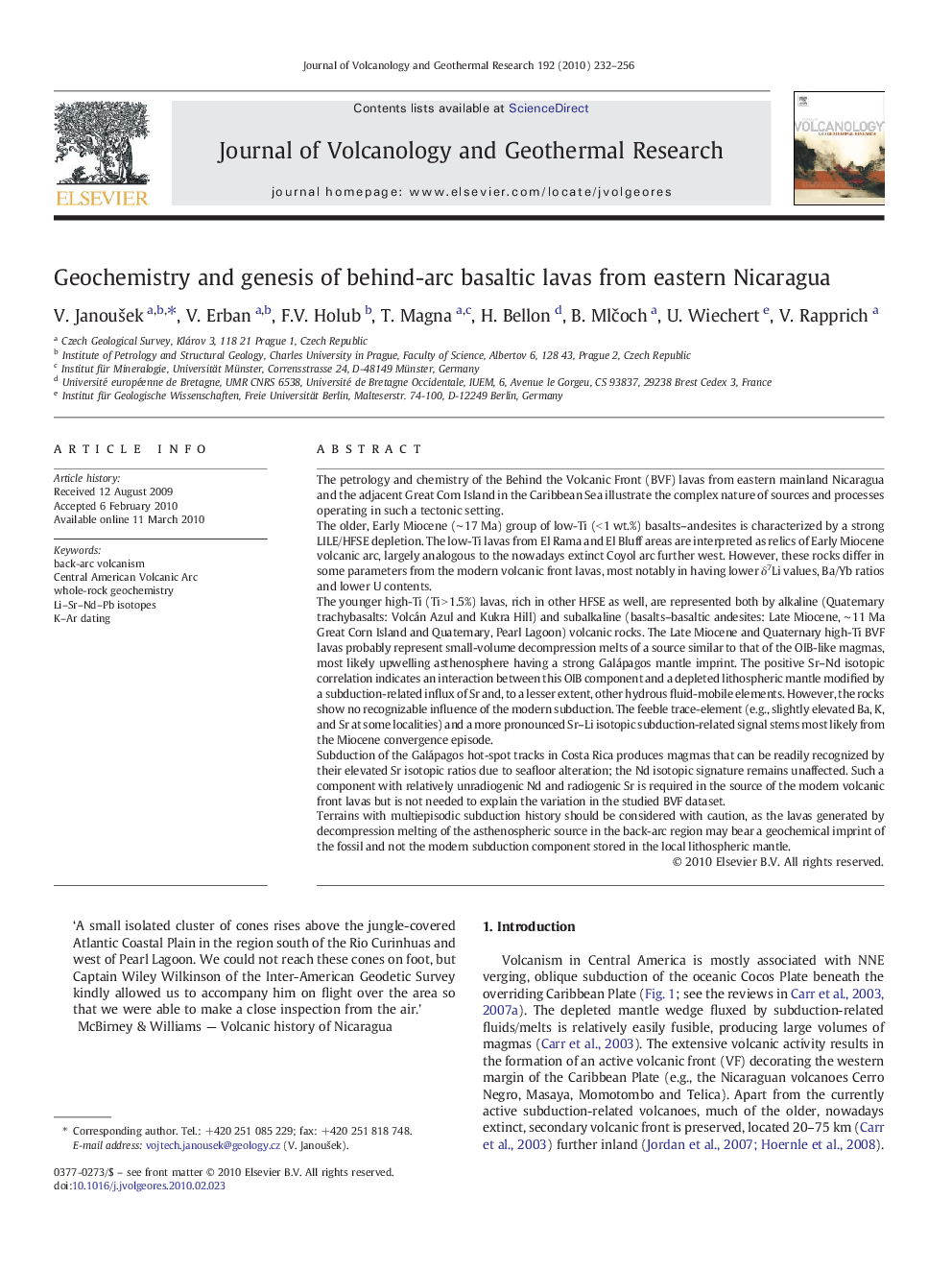| کد مقاله | کد نشریه | سال انتشار | مقاله انگلیسی | نسخه تمام متن |
|---|---|---|---|---|
| 4713077 | 1638420 | 2010 | 25 صفحه PDF | دانلود رایگان |

The petrology and chemistry of the Behind the Volcanic Front (BVF) lavas from eastern mainland Nicaragua and the adjacent Great Corn Island in the Caribbean Sea illustrate the complex nature of sources and processes operating in such a tectonic setting.The older, Early Miocene (∼ 17 Ma) group of low-Ti (< 1 wt.%) basalts–andesites is characterized by a strong LILE/HFSE depletion. The low-Ti lavas from El Rama and El Bluff areas are interpreted as relics of Early Miocene volcanic arc, largely analogous to the nowadays extinct Coyol arc further west. However, these rocks differ in some parameters from the modern volcanic front lavas, most notably in having lower δ7Li values, Ba/Yb ratios and lower U contents.The younger high-Ti (Ti > 1.5%) lavas, rich in other HFSE as well, are represented both by alkaline (Quaternary trachybasalts: Volcán Azul and Kukra Hill) and subalkaline (basalts–basaltic andesites: Late Miocene, ∼ 11 Ma Great Corn Island and Quaternary, Pearl Lagoon) volcanic rocks. The Late Miocene and Quaternary high-Ti BVF lavas probably represent small-volume decompression melts of a source similar to that of the OIB-like magmas, most likely upwelling asthenosphere having a strong Galápagos mantle imprint. The positive Sr–Nd isotopic correlation indicates an interaction between this OIB component and a depleted lithospheric mantle modified by a subduction-related influx of Sr and, to a lesser extent, other hydrous fluid-mobile elements. However, the rocks show no recognizable influence of the modern subduction. The feeble trace-element (e.g., slightly elevated Ba, K, and Sr at some localities) and a more pronounced Sr–Li isotopic subduction-related signal stems most likely from the Miocene convergence episode.Subduction of the Galápagos hot-spot tracks in Costa Rica produces magmas that can be readily recognized by their elevated Sr isotopic ratios due to seafloor alteration; the Nd isotopic signature remains unaffected. Such a component with relatively unradiogenic Nd and radiogenic Sr is required in the source of the modern volcanic front lavas but is not needed to explain the variation in the studied BVF dataset.Terrains with multiepisodic subduction history should be considered with caution, as the lavas generated by decompression melting of the asthenospheric source in the back-arc region may bear a geochemical imprint of the fossil and not the modern subduction component stored in the local lithospheric mantle.
Journal: Journal of Volcanology and Geothermal Research - Volume 192, Issues 3–4, 10 May 2010, Pages 232–256